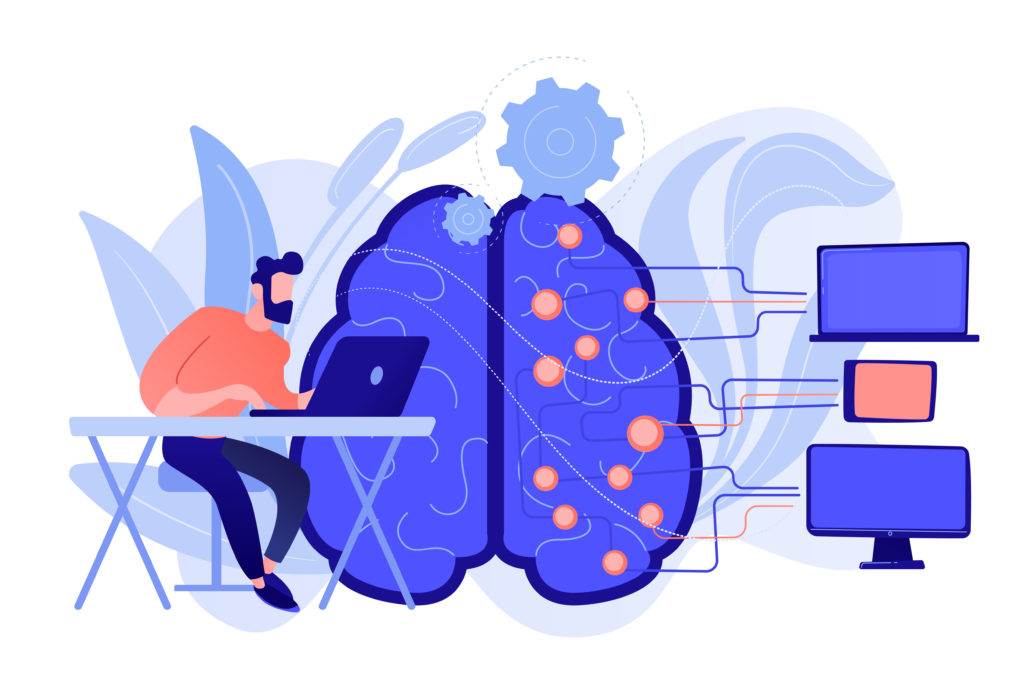
5 Years of Machine Learning, Natural Language Processing, and Computer Vision
As an experienced product manager in the tech industry, I have seen firsthand the incredible advancements that have been made in artificial intelligence (AI) over the past few years. From machine learning to natural language processing (NLP) to computer vision, AI has transformed the way we live and work. But what does the future hold for this rapidly-evolving technology? In this article, I will provide a glimpse into the next 5 years of AI and its potential impact on society.
Introduction to AI and its evolution
Artificial Intelligence, or AI, refers to the development of computer systems that can perform tasks that typically require human intelligence, such as visual perception, speech recognition, decision-making, and language translation. AI has been around for several decades, but recent developments in machine learning algorithms and the availability of vast amounts of data have led to a surge in AI applications.
The evolution of AI has been driven by several factors, including advances in computing power, the growth of the internet and social media, and the increasing availability of big data. As a result, AI has become an essential tool for many industries, from healthcare to finance to retail.
Understanding artificial intelligence and its applications
AI has a wide range of applications, including image and speech recognition, natural language processing, and decision-making. One of the most significant applications of AI is in machine learning, which involves training algorithms to learn from data and make predictions or decisions based on that data.
AI is also used in NLP, which allows computers to understand and interpret human language. NLP is essential for applications such as chatbots, virtual assistants, and sentiment analysis.
Another critical application of AI is computer vision, which involves enabling computers to interpret and understand visual information. Computer vision is used in applications such as facial recognition, object detection, and autonomous vehicles.
The future of AI – A glimpse into the next 5 years
Over the next five years, AI is expected to continue its rapid evolution, with new applications and capabilities emerging. One of the key areas of development is in deep learning, which involves training neural networks with vast amounts of data to improve accuracy and performance.
Another area of focus is in explainable AI, which aims to provide insight into how AI algorithms make decisions. This is particularly important in applications such as healthcare and finance, where the decisions made by AI can have significant consequences.
AI is also expected to play an increasingly important role in the development of autonomous vehicles, with advances in computer vision and machine learning enabling safer and more efficient transportation.
Machine learning and its evolving role in AI
Machine learning is a critical component of AI, and its role is evolving rapidly. One of the key trends in machine learning is the move towards unsupervised learning, which involves training algorithms with unlabelled data to discover hidden patterns and relationships.
Another area of focus is in reinforcement learning, which involves training algorithms to make decisions based on feedback from the environment. Reinforcement learning is essential in applications such as robotics, where machines must learn to interact with their environment.
Natural Language Processing (NLP) and its impact on AI
NLP is another critical component of AI, and its impact is expected to grow significantly over the next five years. One of the key trends in NLP is the move towards more contextual understanding of language. This involves training algorithms to understand the meaning of words and phrases in the context of a sentence or conversation.
Another area of focus is in sentiment analysis, which involves training algorithms to understand the emotional tone of language. Sentiment analysis is essential in applications such as social media monitoring and customer service.
Computer vision and its importance in AI
Computer vision is another critical component of AI, and its importance is expected to grow significantly over the next five years. One of the key trends in computer vision is the move towards real-time object detection and tracking. This involves training algorithms to identify objects in real-time video streams, which is essential in applications such as surveillance and autonomous vehicles.
Another area of focus is in 3D imaging, which involves using computer vision to create 3D models of objects and environments. 3D imaging is essential in applications such as augmented reality and virtual reality.
How AI is transforming businesses – The role of a product manager
AI is transforming businesses across industries, and product managers play a critical role in harnessing the power of this technology. Product managers are responsible for identifying business opportunities and developing products that meet customer needs.
In the context of AI, product managers must understand the capabilities and limitations of the technology and identify opportunities for its application. They must also work closely with data scientists and engineers to develop AI-powered products that deliver value to customers.
Digital transformation and its relationship with AI
Digital transformation refers to the process of using digital technologies to fundamentally transform business operations and customer experiences. AI is a critical component of digital transformation, and its importance is expected to grow significantly over the next five years.
AI is being used to automate processes, improve customer experiences, and develop new products and services. As a result, businesses that fail to embrace AI risk being left behind in the digital age.
Challenges and limitations of AI
Despite its significant potential, AI also faces several challenges and limitations. One of the key challenges is in data privacy and security. As AI becomes more pervasive, the amount of data being collected and analysed is increasing, raising concerns about privacy and security.
Another challenge is in the bias of AI algorithms. AI algorithms are only as good as the data they are trained on, and if that data is biased, the algorithms will be too. This can result in unfair or discriminatory decisions.
Conclusion – The future of AI and its potential impact on society
AI has the potential to transform society in significant ways, from improving healthcare outcomes to reducing carbon emissions to creating new jobs and industries. However, this technology also poses significant challenges and risks, from data privacy to bias to job displacement.
As we look to the next five years of AI, it is critical that we continue to develop this technology in a responsible and ethical manner, ensuring that it benefits society as a whole. As a product manager, I am excited about the opportunities that AI presents and am committed to developing products that deliver real value to customers.
Hire Skilled and Visionary Product Manager
If you are looking to harness the power of AI to transform your business, you need a skilled and visionary product manager on your team. Contact us today to learn how we can help you develop AI-powered products that deliver real value to your customers.
